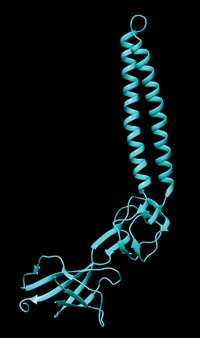Advertisement
Grab your lab coat. Let's get started
Welcome!
Welcome!
Create an account below to get 6 C&EN articles per month, receive newsletters and more - all free.
It seems this is your first time logging in online. Please enter the following information to continue.
As an ACS member you automatically get access to this site. All we need is few more details to create your reading experience.
Not you? Sign in with a different account.
Not you? Sign in with a different account.
ERROR 1
ERROR 1
ERROR 2
ERROR 2
ERROR 2
ERROR 2
ERROR 2
Password and Confirm password must match.
If you have an ACS member number, please enter it here so we can link this account to your membership. (optional)
ERROR 2
ACS values your privacy. By submitting your information, you are gaining access to C&EN and subscribing to our weekly newsletter. We use the information you provide to make your reading experience better, and we will never sell your data to third party members.
Biological Chemistry
Radicals Tell Mice What's Up and Down
Reactive oxygen species are found to play a role in helping mice develop a sense of balance
by Ivan Amato
February 13, 2006
| A version of this story appeared in
Volume 84, Issue 7
In biological contexts, those irascible atoms and molecules known as free radicals have for decades been besmirched as good-for-nothing upstarts that emerge from various cellular processes only to vandalize the delicate biochemical landscape around them. That's why the discovery in recent years of a few enzymes that deliberately produce reactive oxygen species (ROS), a type of free radical, has been so puzzling.
Now, a team of nine researchers at four institutions has found evidence that ROS produced by one of these NADPH oxidase (NOX) enzymes is pivotal to the development of a sense of up and down, at least for a strain of mutant mice with severe balance problems (Curr. Biol. 2006, 16, 208). The finding indicates that free radicals are not always bad to the bone, says research team leader Botond Banfi, a cell biologist at the University of Iowa, Iowa City.
"Most of the work for the last 30 years has followed the paradigm that reactive oxygen is something that is best to get rid of," comments medical pathologist J. David Lambeth of Emory University, one of the first scientists to identify NOX enzymes that generate ROS. "The new work really provides evidence for a novel positive function for reactive oxygen species that was previously unexpected."
Bánfi and his collaborators have shown that ROS are important players in the healthy formation of calcium carbonate particles called otoliths that form above inner-ear sensory hair cells during embryonic development of vertebrates, among them mice and humans. The otolith-cell arrangements function as motion sensors that help animals sense the direction of gravity.
The discovery of an uncharacteristically positive role for oxygen radicals emerged from the researchers' quest to uncover the function of a regulatory component of a NOX complex, Noxo1, a relative of a regulatory protein that previously had been found in phagocytes, a type of immune cell.
The researchers reasoned that their investigation would be greatly aided if they could find a mouse strain with a mutated version of Noxo1. Using genetic and genomic analysis techniques, they found what they were looking for-a mouse mutant known as "head slant" because of the awkward way it holds its head and body. The scientists determined that this animal's Noxo1 gene bears a single extra nucleotide that most likely yields a 34-amino-acid peptide rather than the normal 349-amino-acid Noxo1 protein.
Head-slant mice hobble, fall over, and sometimes move about on their backs, as though they do not know which way is up. "They are like drunk people without the ugliness of being drunk," Bánfi says.
That behavior, the researchers learned from microanatomical studies, is a result of the complete absence of otoliths in the animals' inner ears. And this is where the beneficial role of ROS becomes apparent.
The mutated Noxo1 component reduces the ability of the NADPH oxidase complex in the mutant mice's inner ears to generate superoxide radicals during embryonic development when otoliths form, Bánfi explains. The researchers conjecture that in normal animals, ROS may help the vesicles in which otoliths form become permeable to calcium and other components involved in otolith formation. "The next exciting questions for us is to find out the mechanism here," Bánfi says.





Join the conversation
Contact the reporter
Submit a Letter to the Editor for publication
Engage with us on Twitter